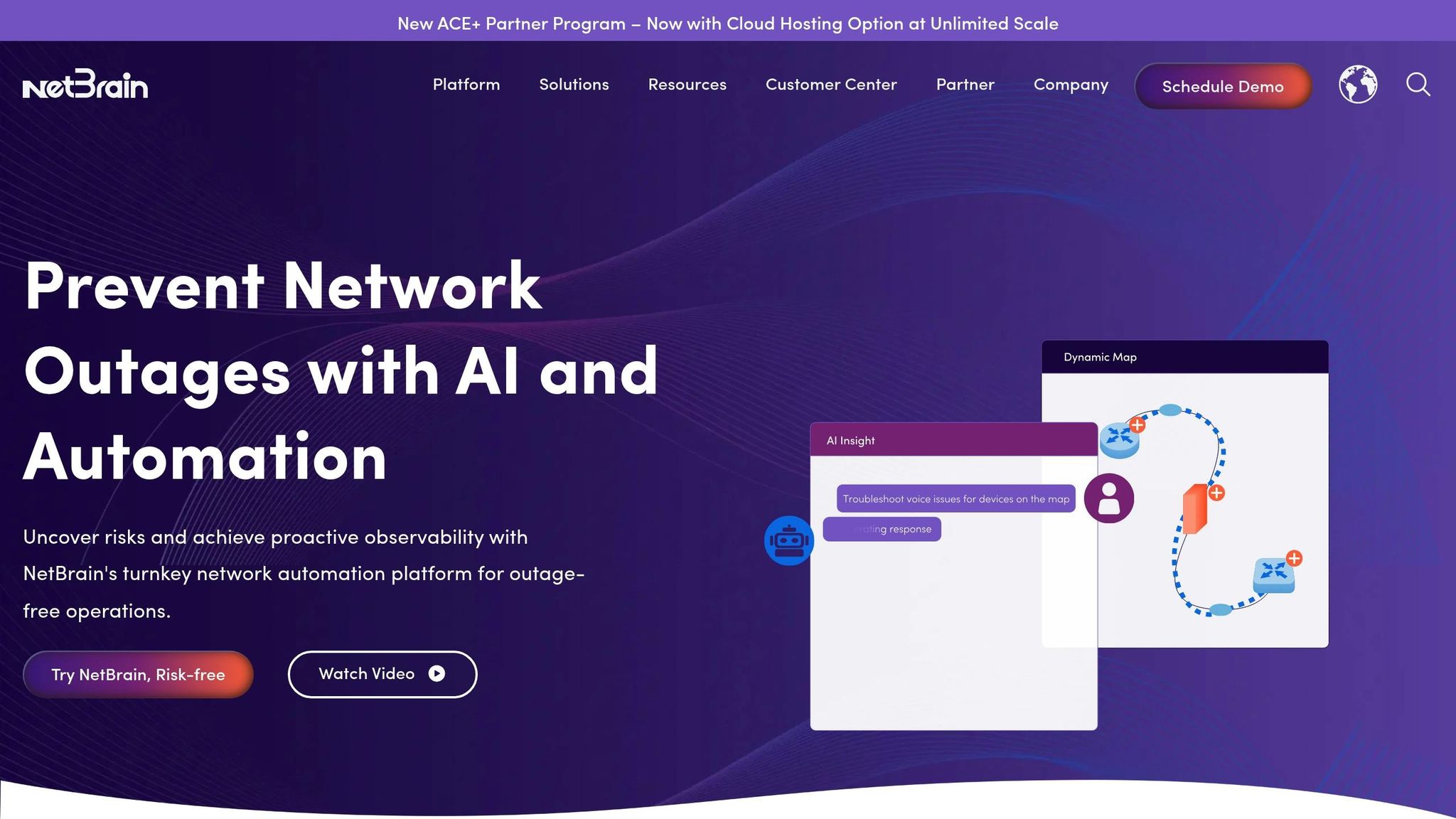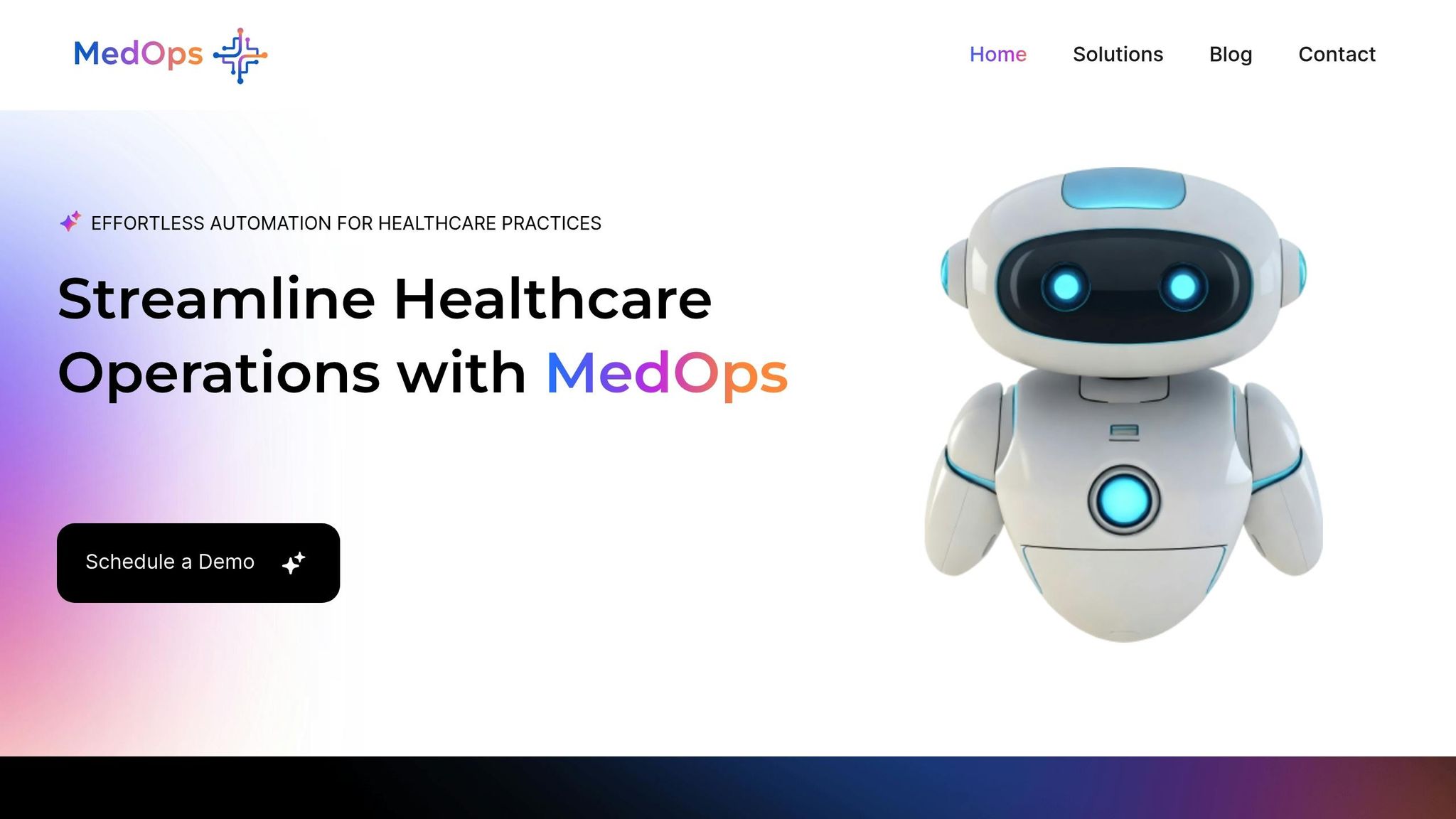Explore how AI-driven tools enhance scalability and performance in healthcare operations, ensuring efficiency and security while managing high patient volumes.
Healthcare providers demand tech solutions that can handle large-scale operations without compromising speed or reliability. MedOps claims to meet these challenges with AI-powered tools for tasks like insurance verification and workflow automation. Here's what you need to know:
| Criteria | Pros | Cons |
|---|---|---|
| High-Volume Performance | Efficient during peak demand. | Custom pricing may complicate budgeting for scaling. |
| Multi-Location Support | Centralized data management improves coordination. | Deployment can be tricky when infrastructure varies. |
| Enterprise-Grade Security | Strong access controls and audit trails. | Requires ongoing staff training to maintain compliance. |
| API Load Balancing | Dynamic load management ensures reliability. | IT resources needed to manage integrations and stability. |
| Geographic Performance | Adheres to healthcare data standards for seamless data sharing. | Local network conditions can impact system responsiveness. |
MedOps offers tools to modernize healthcare operations, but scaling successfully requires careful planning to address infrastructure and training needs. Its features promise efficiency and reliability, but organizations must weigh the setup complexities against the benefits.


MedOps uses an AI-driven API that integrates seamlessly with Electronic Health Records (EHR). This setup is designed to handle growing demands while maintaining system integrity and ensuring smooth operations, even as patient volumes fluctuate. Here's how MedOps supports the intricate needs of healthcare systems:
MedOps is built to handle both everyday patient workflows and sudden surges in demand. Whether it's routine insurance verification or automating workflows, the system keeps running smoothly without slowing down, even during peak times.
For healthcare providers with multiple facilities, MedOps syncs patient data, insurance details, and workflow updates in real time. This centralized system allows administrators to oversee operations across all locations while addressing the unique needs of each site, making resource allocation and care coordination much easier.
MedOps meets HIPAA requirements by implementing robust access controls and audit trails that log every system interaction. These features not only protect sensitive patient data but also help organizations stay prepared for regulatory audits and compliance checks.
To ensure uninterrupted access to patient data, MedOps uses dynamic API load balancing. This keeps the system running smoothly across all integrated applications, even during periods of high demand.
By adhering to FHIR interoperability standards, MedOps ensures efficient data sharing and consistent performance across different locations. This makes it easier for healthcare systems to operate seamlessly, no matter the local variations in infrastructure or demand.
The table below highlights the strengths and challenges of MedOps across key scalability factors, providing a clear picture of its performance in dynamic healthcare settings:
| Criteria | Advantages | Disadvantages |
|---|---|---|
| Performance at High Volumes | Designed to efficiently manage routine insurance verification and automate workflows, even during peak demand. Its AI-driven system dynamically adapts to changing patient volumes. | Custom pricing can make it difficult for organizations to predict future costs when planning for increased capacity. |
| Multi-Location Support | Offers centralized data management, ensuring seamless coordination across multiple facilities and enabling effective resource allocation. | Rolling out support across different locations can be challenging, especially if network infrastructures vary significantly between sites. |
| Enterprise Security Standards | Tailored for healthcare, MedOps incorporates strong security protocols and access controls to protect sensitive data. | Keeping staff trained on updated security measures and maintaining compliance can add to administrative responsibilities. |
| Load Balancing for APIs | Implements load management strategies to ensure consistent performance during periods of high demand, helping maintain reliable access to integrated systems. | The technical setup may require dedicated IT resources to fine-tune integrations and maintain system stability. |
| Geographic Performance Metrics | Optimized for consistent performance across regions by using standard healthcare data protocols, which streamline data sharing. | System responsiveness can be affected by local network conditions, making standardized implementation crucial for consistent results. |
These points illustrate the practical trade-offs involved in deploying MedOps. To fully leverage its scalability, organizations need to plan carefully, addressing both infrastructure and operational challenges to ensure reliable and efficient healthcare operations.
MedOps transforms healthcare operations by leveraging AI-driven tools for insurance verification and workflow automation. By streamlining administrative tasks and minimizing errors, the platform helps healthcare providers focus more on patient care. It seamlessly integrates with existing systems, simplifying complex processes and boosting overall efficiency. This makes MedOps a valuable solution for modernizing and improving healthcare operations.
MedOps keeps things running smoothly during peak demand by using AI-powered APIs to simplify data sharing and boost efficiency. These tools are built to handle large amounts of activity while maintaining both speed and accuracy.
To manage scalability effectively, MedOps leverages cloud-based technologies such as Kubernetes and serverless computing. This setup allows the system to adjust effortlessly to changing workloads, ensuring consistent performance, efficient resource allocation, and reliable healthcare services, even during the busiest periods.
Implementing MedOps across various healthcare locations comes with its fair share of challenges. Providers often need to tackle differences in infrastructure, ensure uniform clinical and operational standards, integrate diverse IT systems, and maintain secure, dependable data connections across all sites.
One of the biggest hurdles is dealing with outdated or incompatible systems, which can make deployment tricky and impact overall performance. On top of that, meeting strict security and compliance requirements becomes even more daunting in resource-limited settings. Addressing these issues takes careful planning, seamless coordination within the organization, and investing in secure, flexible technology to bridge the gaps.
MedOps prioritizes HIPAA compliance by safeguarding sensitive patient data through a combination of carefully designed security measures that align with the HIPAA Security Rule. These measures are structured to address various aspects of data protection:
By implementing these protections, MedOps ensures the confidentiality, integrity, and availability of electronic protected health information (ePHI). This approach not only mitigates the risk of cyber threats or unauthorized access but also adheres to healthcare industry standards for data security.